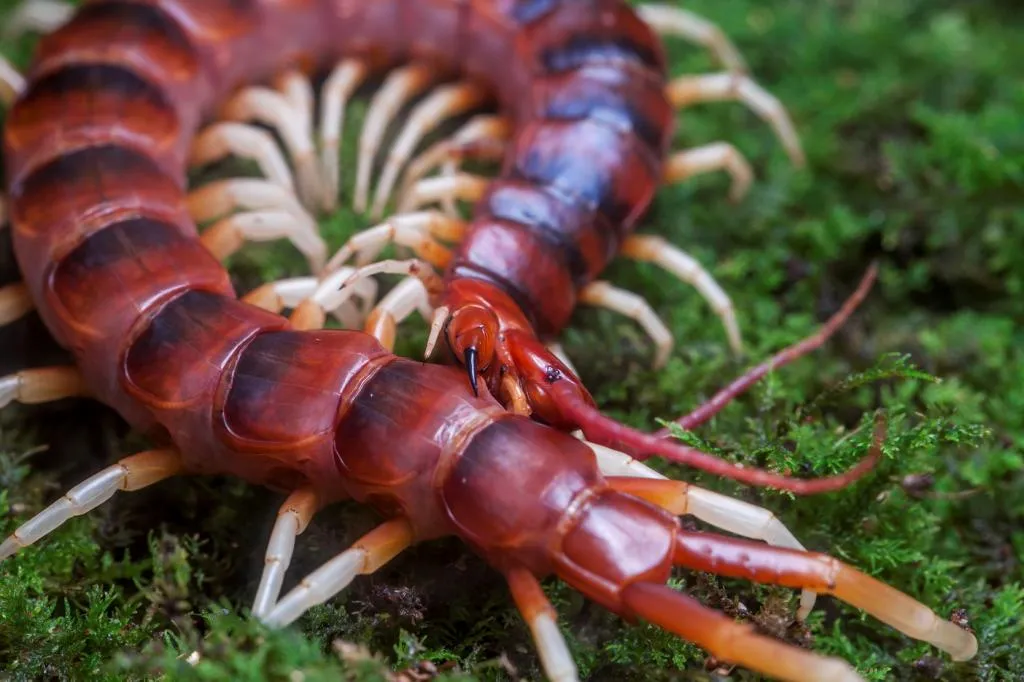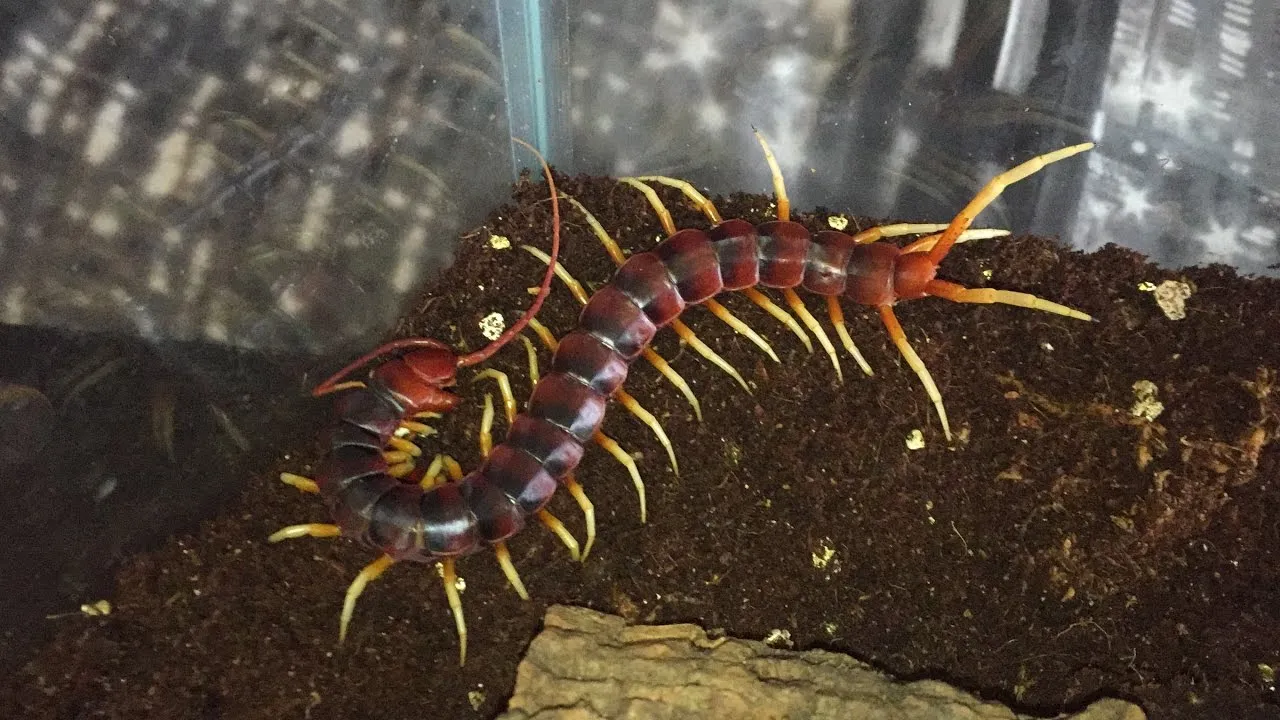Scolopendra Linnaeus, is a kind of arthropod in the Chilopod class.
These rather oblong arthropods have a somewhat massive and robust body. The body is slightly flattened and protected by hard chitin-plated plaques and interconnected by flexible membranes. Due to the nature of their exoskeleton, which does not grow with the growth of the rest of the body, scolopendre are subject to mute during their development.

The body is divided into two sections: head and trunk. On the 2 sides of the head there are 4 simple eyes, not composed (ocelli) along with a pair of well-visible filiform antennas.

The trunk is subdivided into 21-23 segments, each with a pair of paws adapted to move quickly to run, and to grab the prey firmly before killing it: in fact, the sculls normally wrap around the prey to prevent it escape.
The last pairs of paws are usually well developed and turned backwards: it probably has the function of warning to predators or to confuse them because their paws look much like their heads.
The first pair of paws is folded out under the head and modified to form hooks, said forcible, poisonous ones with which it kills its prey. It is interesting to note that all sorts of centipede, including this, have pair paws only in an odd number.

The venom of these arthropods contains acetylcholine, histamine and serotonin and is toxic to the man to whom it can cause, in addition to intense pain in the injection site, inflammation and also general symptoms such as fever, weakness and abundant sweating. Their poison had long been known so much to be used by traditional Chinese medicine as a remedy for rheumatism, calculus and some skin diseases